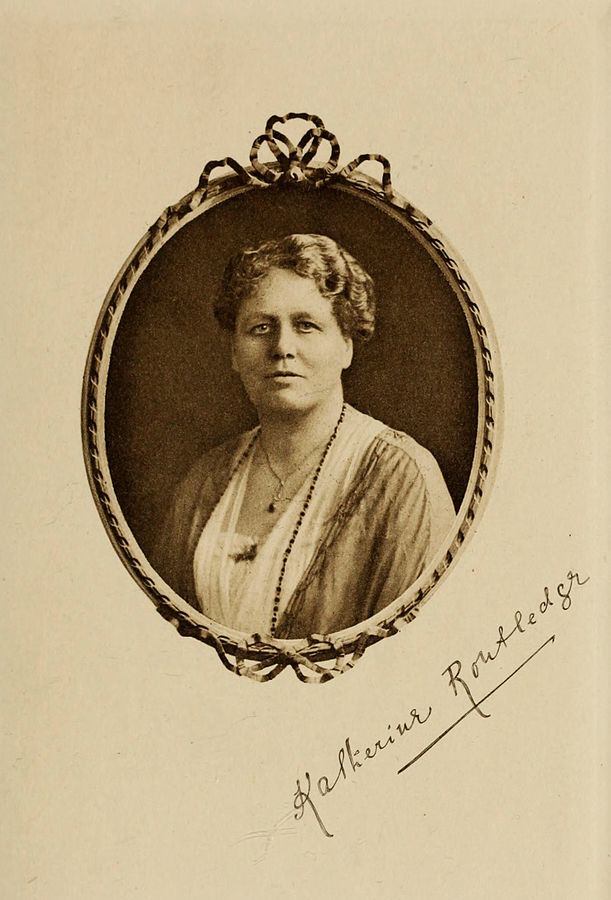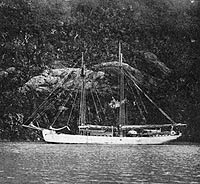Lucky for us, in terms of stories and knowledge, some women during the Victorian Era (1837-1901) broke free of the constraints limiting women and became explorers. Apparently the spirit of adventure and the lure of knowledge and freedom were (and still are) a powerful incentive.

Katherine Routledge (1866-1935) grew up in a wealthy Quaker family in northern England. She graduated from Oxford in 1895, in her late 20s, after studying Modern History. She taught for a while and then traveled to South Africa.
In 1906, at the age of 39 or 40, she married anthropologist William Scoresby Routledge, and together they went to British East Africa to study the Kikuyu culture. Based on those studies, they published With a Prehistoric People in 1910.
Then they set their sights on another mostly unknown culture. They planned an expedition to Easter Island (Rapa Nui). They had a special yacht build and with a small crew set sail from England in 1913. It took them a year to get to the remote island.

During their time on Easter Island they excavated and studied some of the mysterious stone statues (moai). To understand the moai, Routledge also interviewed the people about their culture as it was at that moment and as it had been in the past. To help understand the time frame of her visit, World War I began the year they reached Easter Island.
Routledge and her husband returned to England and in 1919, when she was in her early 50s, she published The Mystery of Easter Island: The Story of an Expedition. Besides sharing what she learned on the island, she also included the journeys to and from the island and the places they stopped along the way. In the early 20th century, travel books were all the rage.

Routledge kept her field notes, photos, drawings, and whatever else she would need to write a more scientific study about the culture of Easter Island. Although that never happened, Routledge’s book, papers, and artifacts in the Pitt Rivers Museum and the British Museum, are still studied by those interested in the people and moai of Easter Island.
There was a history of mental illness in Routledge’s family, and her brother had spent more than two decades in a sanitarium. Throughout the 1920s Routledge’s paranoid schizophrenia became increasingly debilitating. During that decade she and her husband split up and she became increasingly isolated. In 1929 her husband had her forcibly committed to a mental health facility. She died there at the age of 69 in 1935.
These are the barest of bare bones of her life, and if you would like to learn more about Routledge, or about the Victorian world she left, check out Among Stone Giants: The Life of Katherine Routledge and Her Remarkable Expedition to Easter Island by Jo Anne Van Tilburg. Van Tilburg has also written some articles here at the Easter Island Statue Project website about Routledge.
One last note to remind you of the world in which Routledge lived. There is a journal article in Folk=Lore: Transactions of the Folk-Lore Society titled “The Bird Cult of Easter Island”, which is from a paper read before the Society on May 16, 1917. The article is by “Mrs. Scoresby Routledge”.
